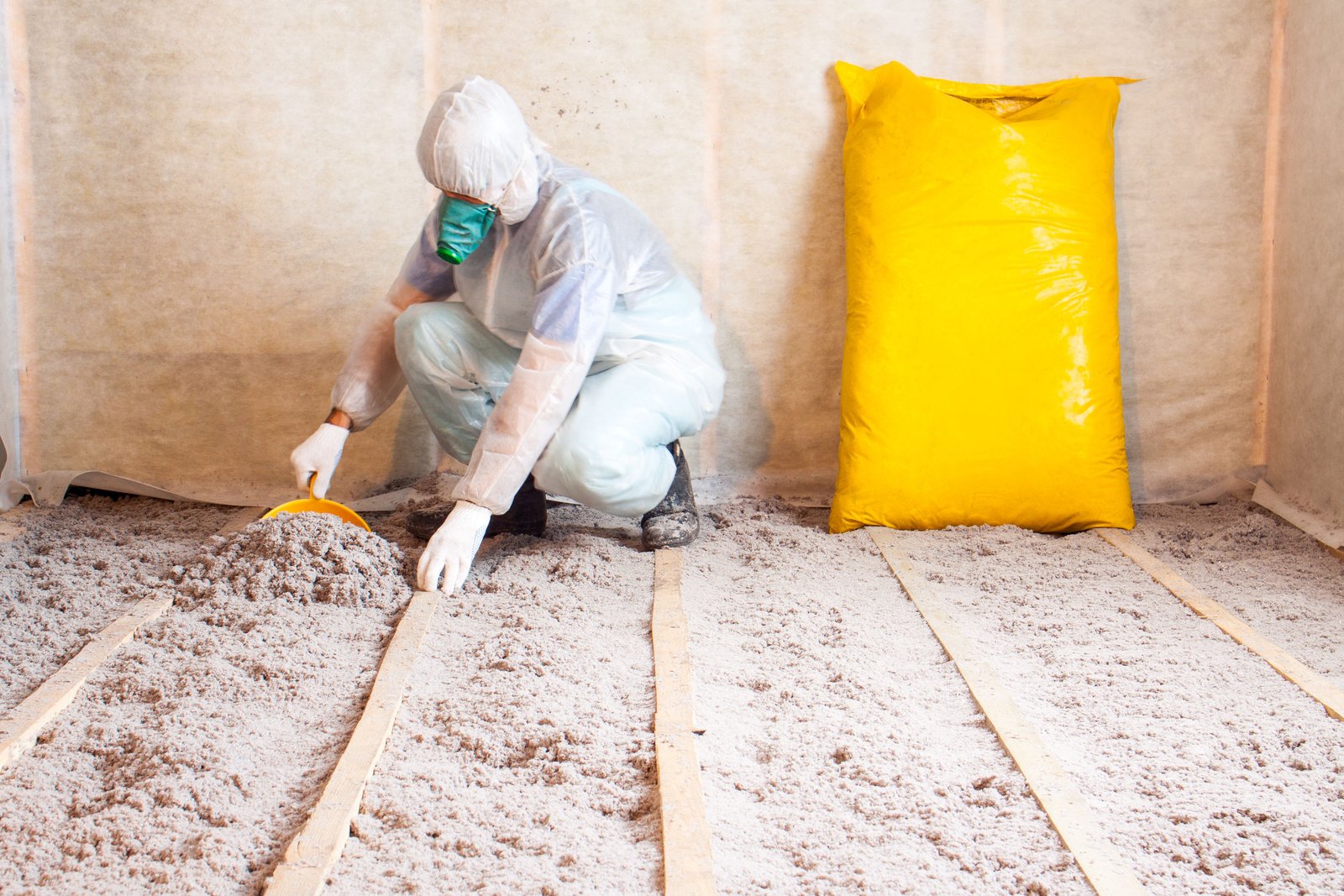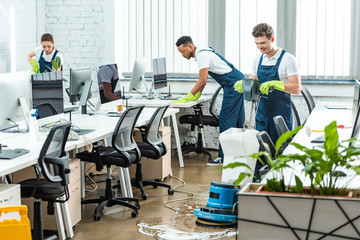How to Prepare Your Home for Insulation Removal
Blow In Insulation Removal is a difficult and messy project. It requires a special vacuum machine and a lot of protective gear. Old insulation can contain mold, rodent excrement urine, and other hazardous materials that professionals should only handle.
The best way to remove cellulose and fiberglass insulation is to use a specialized machine. This helps prevent the spread of fibers and dust into living spaces.

Depending on the reason for insulation removal, certain steps need to be taken to ensure the job is done correctly and safely. These steps may include laying down plastic sheeting, removing furniture and personal items stored in the attic, and more. Preparing the area for insulation removal will make the entire process much smoother and help prevent accidents or mishaps.
The first step in preparing the area for insulation removal is to locate and shut off all power and utility sources in the space. This will eliminate the risk of electric shock or utility damage while working with fiberglass insulation. This can also help reduce the potential for contamination, as old insulation that has been exposed to moisture or mold may be contaminated with toxic materials that could cause health problems if inhaled.
It’s also important to clear the area of any furniture or equipment that might hinder access to the area where the insulation will be removed. This will ensure the entire workspace is clear and allow you to remove the insulation without any obstacles or hindrances. Lastly, it’s important to lay down protective covers in the work area to catch any fiberglass particles and debris that might be dispersed during removal.
Once the workspace is cleared, it’s time to begin removal. This can be done using either a hand or vacuum extraction method. If you use a hand method, it’s important to wear proper safety gear such as eye protection and rubber gloves. It’s also a good idea to wear a face mask to protect yourself from dust and other airborne contaminants.
If you are using a vacuum extraction method, it’s essential to use a high-quality industrial-grade vacuum equipped with a HEPA filter. This will help keep the dust and other toxins from spreading throughout your home and make it easier to dispose of the insulation. Once the insulation is removed, it’s a good idea to dispose of it in sealed plastic bags.
Insulation helps to keep your home comfortable all year round. It helps save on energy costs and improve your home’s air quality. However, insulation can degrade over time and may need to be replaced. Removing old insulation when you notice signs of damage, such as rodent droppings or a musty smell, is important. You can return this with new insulation to help improve your home’s energy efficiency and air quality.
Before removing the insulation, it’s important to ensure you have all of the necessary tools and equipment. This includes a HEPA-filtered shop vac, large garbage bags, rakes, and dustpans. You should also wear a mask to prevent dust from entering your lungs.
You should also prepare the attic space by clearing away any furniture and boxes in the attic. This will allow you more room for the removal process and reduce the risk of contamination of items in your home. Once you’ve prepared the attic, you can start removing the insulation. This should be done slowly and carefully to avoid any injuries.
First, you’ll need to remove any staples holding insulation strips between the wall studs. Then, roll the insulation down and place it in a garbage bag. Repeat this process until all of the insulation is removed. You can use a hammer or flathead screwdriver to cut any insulation too thick to roll up.
Some types of insulation can’t be removed by hand, such as blown-in foam and loose fiberglass insulation. These can be sucked up using an industrial hose. If you have this type of insulation in your home, hiring a professional to handle the removal is a good idea.
This dangerous job requires a lot of effort and physical work. It can be difficult for homeowners to perform, especially if this is their first time doing it. It’s also not a safe job and can lead to injuries if you aren’t careful.
Insulation helps save energy, lowers heating and cooling costs, and reduces the emission of greenhouse gases. It is generally recommended that homes replace or retrofit their insulation every 15 to 20 years. But sometimes, it can need to be done earlier than this if you notice that the existing insulation has lost its effectiveness or that it shows signs of deterioration.
Suppose you plan to do a home renovation that requires the removal of old insulation. In that case, it’s important to follow proper disposal procedures for the safety and health of your family and the environment. This is because old insulation materials may contain asbestos or other hazardous components that are not good for the environment and our bodies.
You can start the process by taking some preventive measures to minimize the risk of environmental contamination and by following local regulations and guidelines on waste management. This will also help in minimizing waste and reducing the burden on landfills.
Depending on the type of insulation and the material it is made from, you may need to separate the materials for easier recycling or disposal. This is especially true for blown-in or loose-fill insulation, which can vary in composition and type – from fiberglass to cellulose to mineral rock wool or slag. This material is typically not recyclable through your regular trash system and is considered household garbage.
For this reason, it’s best to hire professionals to remove and dispose of your insulation. They have the appropriate equipment, experience, and knowledge of local disposal rules and regulations. They will ensure that all the materials are disposed of properly and safely.
Professionals will use industrial vacuum equipment to remove the insulation from the walls and ceilings of your house. They will also take care of any debris left behind in the attic or walls and dispose of it properly. They will also do other necessary repairs or retrofits before installing new insulation to ensure your house is insulated properly and efficiently. This will help maximize the life of the new insulation and provide better performance and comfort.
Once the insulation has been removed, it’s important to clean up the work area and dispose of any materials used in the cleaning process. This will ensure that no fiberglass particles are spread throughout the house or building and prevent any harmful contaminants from being inhaled. It’s also a good idea to disinfect surfaces and areas that come into contact with the insulation, as this can help prevent mold or mildew growth.
If you remove yourself, wear safety gear before beginning the project. This should include long sleeves, gloves, goggles (to protect your eyes from any loose fibers), and a respirator with a high level of protection, such as a HEPA filter. It’s also a good idea if you have a hard hat, as it will offer additional protection from any loose particles that might fly around.
It’s also a good idea to close off the area where you’re working so that no debris or dust can travel to other parts of your home. This can be done using plastic tarps or sheets to create a barrier. You should also keep children and pets away from the work area, as fiberglass particles can be harmful if ingested or inhaled.
Finally, once you’re finished with the cleanup process, be sure to dispose of all of the bags of fiberglass waste by local regulations for hazardous or construction waste. Be sure to clean up any surfaces and tools that may have come into contact with the insulation to avoid contamination.
If you’re unsure of how to remove insulation safely, be sure to consult a professional contractor. They can help you find the best method for removing your old insulation and replacing it with a new, safe material that will enhance the indoor air quality in your home. In addition, professional contractors can provide you with a range of other services, including installing new attic vents and improving the energy efficiency of your house. These services can help you save money on your energy bills in the long run, so investing in their expertise is worth supporting.

